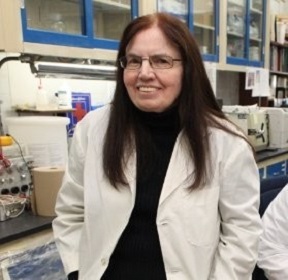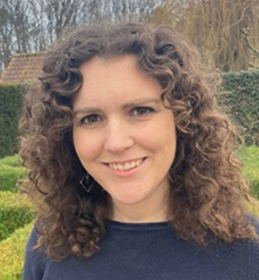Keynote Forum
Patricia A Broderick
Univerity of New York School of Medicine USATitle: The electroactive signal for the tau peptide: neuromolecular imaging (nmi): a live nanotechnology for alzheimer, parkinson and epilepsy disease
Abstract:
The Tau gene and its reported six Tau isoforms are known to be present in the brain of Alzheimer’s patients, When we attempt to discern Parkinson disease, Lewy Body Dementia and Alzheimer disease including other neurodegenerative disorders of asynchrony similar to epileptogenic seizures, we are met with a huge question mark as to both diagnose and treat because the central distinctions among these dreaded diseases are beset with confusing guidelines. To this point, previous post mortem studies have assayed Lewy Bodies, alpha synuclein, the amyloid precursor proteins and Tau but the limitations of “life after death” (post mortem) may simply add to mis-diagnoses. There is a need to cure the dementia of tauopathies! The BRODERICK PROBE® series of biosensors work by electrochemical detection and are comprised of carbon and/or carbon allotropes in one example and fiber optic proteins in another of the many examples. In the present study, the original carbon sensors, the carbon/lipid/phosphotidyl polymers were used to neuromolecular image Tau LIVE. The nanoprobe is unique from others as it is so tiny that it can be used anywhere and for any length of time; the operationally stable biomedical biosensors/nanoprobes do not cause gliosis (scar tissue) nor do they produce infection (bacterial growth). The results show that the nanoprobe acts to image Tau through mechanisms of phosphorylation. The LIVE electroactive image for Tau in the precise striatal basal neurons of the living Parkinson subject is actually seen here, online and within seconds likely as a metal complex, phosphorylated in a Parkinson subject. Thus, the elusive nature of Tau is further elucidated as a dynamic redox reaction occuring LIVE in the brain of the living Tau patient and animal via the BRODERICK PROBE®. Accepted as Clinical Paper/Technical Report by MedCrave (Case Reports Journal), April, 2021.
Biography:
Patricia A. Broderick has completed her PhD from St John’s University, Queens, NY, USA and her postdoctoral studies from The Albert Einstein Medical Center, Bronx, NY, USA and Cornell University Medical School, White Plains, NY, USA. Patricia serves as Tenured and Full Medical Professor in the Dept. of Molecular, Cellular and Biomedical Sciences at the City University of New York School of Medicine and as Director of the Neurobiology Course at the Sophie Davis School of Biomedical Education, CUNY School of Medicine, CCNY. A highly recognized expert and prominent editor, author, inventor and lecturer, Patricia has published more than 500 papers in reputed journals and sought after books and she serves as an editorial board member of repute worldwide. Dr. Broderick holds several patents and trademarks and is the Founder and CEO of Eazysense Nanotechnologies Inc.and the Broderick Brain Foundation.
Speakers
Tine Gregoor
External Service for Prevention and Protection at Work, Belgium BelgiumTitle: The psychological aftermath of voluntary medical assistance after the terrorist attack on the brussels metro: who’s the doctor for the doctor?
Abstract:
Abstract:
On 2016 March 22th, the national airport and the metro in Brussels were the target of two successive terrorist attacks which killed 35 people and seriously injured hundreds of others. Due to my voluntary commitment near the Maelbeek metro station, I was left out in terms of acute psychosocial relief, since I was not involved in an organization such as fire brigade or police. Research shows that in the aftermath of a terrorist attack, healthcare providers directly involved in the rescue of these victims report a significantly higher psychological impact, defined by Post Traumatic Stress Disorder (PTSD) symptoms, than those not directly involved. A number of victims and rescue workers exhibit a mixture of PTSD and mild Traumatic Brain Injury, which is a typical trauma-like brain concussion syndrome. Furthermore, unaffiliated volunteers seem to be at higher risk of posttraumatic stress, while professional rescue workers appear to be more protected.
As a child psychiatrist in training, I quit my residency after the attack, and started a carreer in occupational medicine. In Brussels, I work with employers and employees who experienced this tragedy. In my presentation I give answers on the following questions: How did they deal with this event? What impact do these terrorist attacks still have, five years later? What are the lessons learned in the field of psychotrauma care in Belgium? And finally, I will tell you my story about the impact of the event in my doctor’s office, for my patients and likewise, for me as a doctor.
Biography:
Tine Gregoor is a Belgian occupational health physician, child consultation clinic physician, public speakor, author and filantropist. She has experience in anesthesiology and childhood psychiatry and has a special interest in the field of maternity protection, fertility, mental illness, particulary in the management of psychotrauma.
During the 2016 Brussels attacks at the Maelbeek metrostation, Gregoor was a first responder, helped the most heavily injured in a prehospital setting. In her book ‘Bombs in Brussels’, which she wrote together with war journalist Joanie de Rijke, she goes in search of victims, relatives, aid workers, policymakers and security services five years afterwards
Soumya Sree Tangirala
University of Dundee Medical School United KingdomTitle: Personality disorders – who are we?
Abstract:
Personality disorders cover a wide range of areas and it is quite hard to understand. I suffer from borderline personality disorder and its hard for me to even get the idea of things. Terms are given not because it makes you suddenly a different person but so it is easier for you to find acceptance within yourself. In addition to this it allows other people to gain an understanding of our complex brains. There is simply not enough awareness of how common these personality disorders are and how it affects us on a daily basis. This talk will explain the types of disorders classification, how common they are and some real life stories from myself, managing my traits of borderline personality disorder.
Biography:
Soumya embarked on a Gap year in 2018 and worked as a care assisstant in a care home and a support worker for autistic adults. 2019 she got accepted into Dundee Medical School and now is a 2nd year medical student
Helen Brice
Maudsley Hospital, UK United KingdomTitle: A place at the table. How neuroscience came to the rescue of talking therapy.
Abstract:
In recent years in the UK, the treatment for mental illness became a combination of 3 elements: psychiatry, medication and Cognitive Behaviour Therapy. Traditional talking therapies were deemed less suitable, because they took too long and didn’t “cure” people. Short term, CBT treatment looked as if it were the “new thing”. Then came neuroscience. Neuroscience brought a resource that therapists can use: it told us that the brain and the nervous system are intrinsically relational; that we have one brain and one nervous system. Neuroscience gave psychotherapists the limbic system, polyvagal theory, limbic revision, and the importance of biotemperament. Traditional talking therapists, and those who are concerned with matters of the mind and bodymemory have consistently and repeatedly maintained that reciprocal relationships – or just one - is absolutely fundamental for our wellbeing. Neuroscience gave us something that we could “use” – tools, skills – with which psychotherapists could agitate the sediment in which our clients had become stuck. I will attempt to show how two apparently opposing worlds of psychotherapy and neuroscience came together, and how exciting this is for traditional talking therapy. You will hear real clients’ stories and how I worked with them across five distinct settings including private hospital, private practice and prison. I will explain how I use two completely different modalities of training – Existential Psychotherapy (which challenges the medical model) and Dialectical Behaviour Therapy (which was born out of neuroscience); and how neuroscience gave us something we could use to treat the untreatables.
Biography:
Helen Brice has a busy private practice in London. She is a highly experienced psychotherapist for individuals and couples, with a specialist interest in Personality Disorders, particularly BPD/EUPD, and with clients who are emotionally over-controlled with personalities that are avoidant, obsessivecompulsive, paranoid and also chronically depressed or have anorexia nervosa. Helen’s referrals come from psychiatrists, the Maudsley Hospital and, since her pioneering Stimmung Therapy Programme for musicians and actors, the British Association Of Performance Arts Medicine and the Equity Charitable Trust. She spoke at the World Music Conference 2020, and at the Society For Existential Analysis Conference in 2018.




